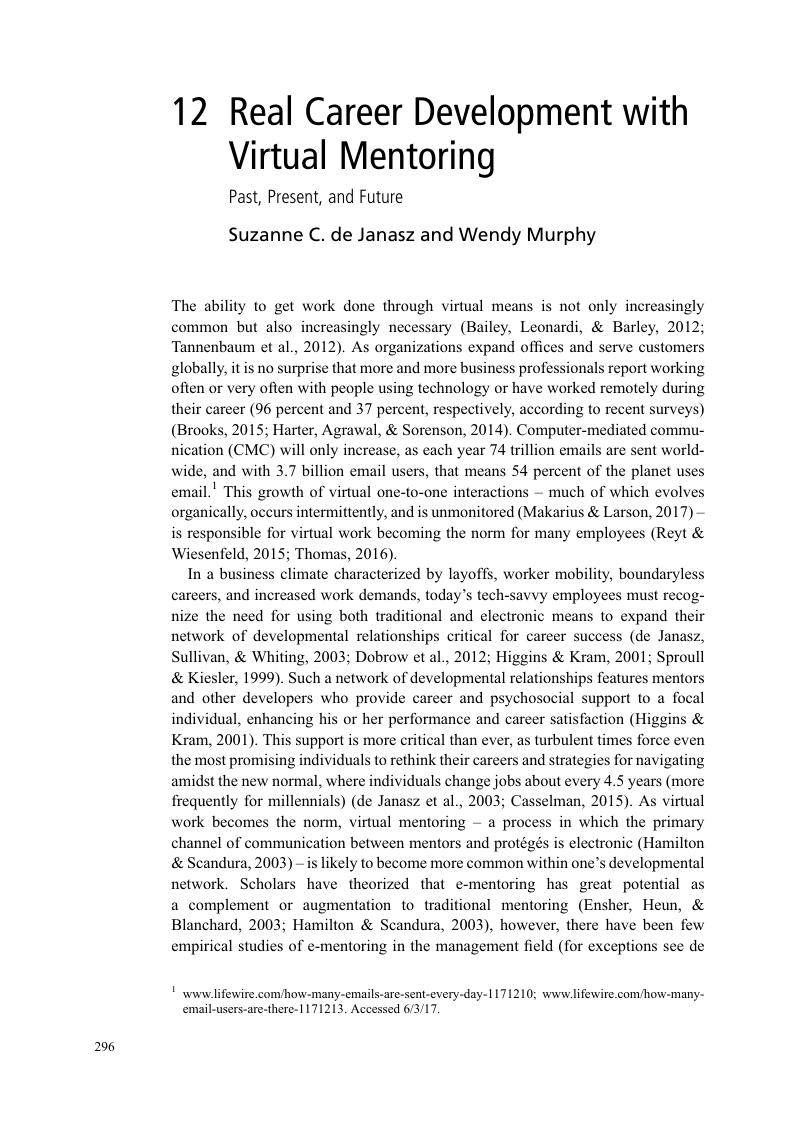Book contents
- The Cambridge Handbook of Technology and Employee Behavior
- The Cambridge Handbook of Technology and Employee Behavior
- Copyright page
- Dedication
- Contents
- Notes on Contributors
- Preface
- Acknowledgments
- Part I Technology in I-O Psychology
- Part II Technology in Staffing
- Part III Technology in Training and Development
- 11 Gamification of Adult Learning: Gamifying Employee Training and Development
- 12 Real Career Development with Virtual Mentoring
- 13 Professional Coaching
- 14 Virtual Reality Training in Organizations
- Part IV Technology in Leadership and Teams
- Part V Technology in Motivation and Performance
- Part VI Technology in Statistics and Research Methods
- Part VII Interdisciplinary Perspectives on Employees and Technology
- Index
- References
12 - Real Career Development with Virtual Mentoring
Past, Present, and Future
from Part III - Technology in Training and Development
Published online by Cambridge University Press: 18 February 2019
- The Cambridge Handbook of Technology and Employee Behavior
- The Cambridge Handbook of Technology and Employee Behavior
- Copyright page
- Dedication
- Contents
- Notes on Contributors
- Preface
- Acknowledgments
- Part I Technology in I-O Psychology
- Part II Technology in Staffing
- Part III Technology in Training and Development
- 11 Gamification of Adult Learning: Gamifying Employee Training and Development
- 12 Real Career Development with Virtual Mentoring
- 13 Professional Coaching
- 14 Virtual Reality Training in Organizations
- Part IV Technology in Leadership and Teams
- Part V Technology in Motivation and Performance
- Part VI Technology in Statistics and Research Methods
- Part VII Interdisciplinary Perspectives on Employees and Technology
- Index
- References
Summary

- Type
- Chapter
- Information
- The Cambridge Handbook of Technology and Employee Behavior , pp. 296 - 314Publisher: Cambridge University PressPrint publication year: 2019
References
- 1
- Cited by



